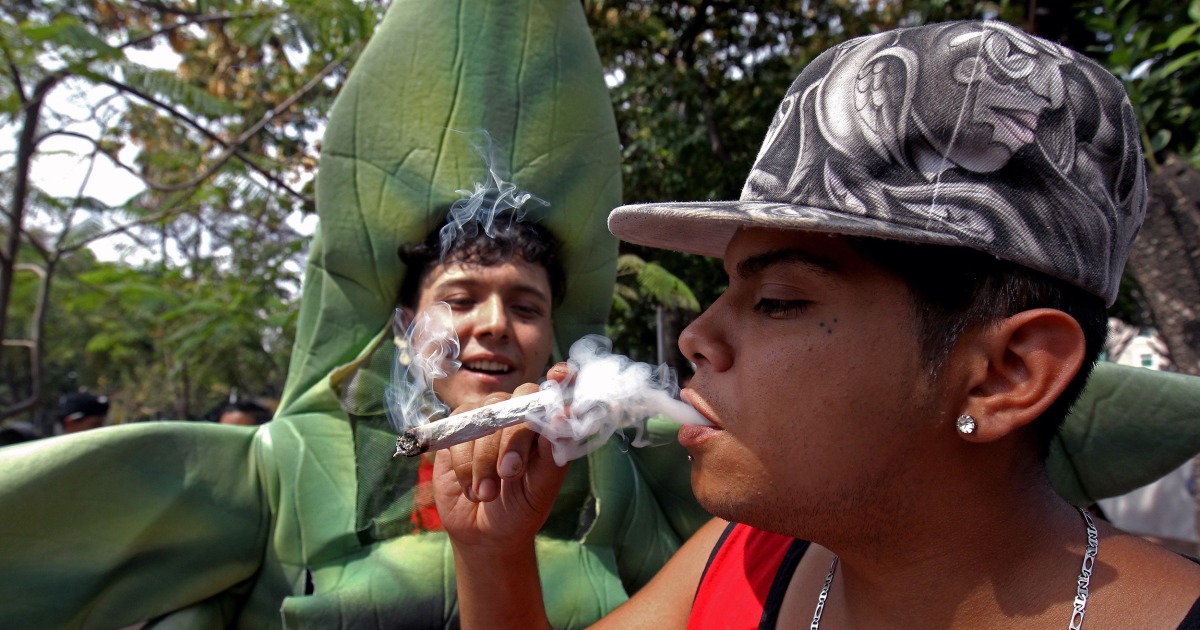Mexico is moving towards becoming the largest legal marijuana market in the world, as lawmakers prepare to debate a proposal to legalize recreational marijuana.
The House of Representatives, a lower house of Congress similar to the United States House of Representatives, will address the issue early next week, said Martha Tagle Martínez, a member of the House’s health committee. in a series of tweets.
The Senate approved the legalization of medical marijuana almost four months ago, and two months later, the Ministry of Health published rules to regulate the use of medical cannabis.
Former President Vicente Fox, who sits on the board of global medical marijuana company Khiron Life Sciences Corp., said he sees the potential for Mexico to profit from much-needed job creation, economic investment and medical advances.
A regulated market could also help to reduce cartel violence that has become synonymous with the country.
“A lot of big things are going to happen,” he said. “We are taking this beautiful plant from criminals and placing it in the hands of retailers and farmers.”
Mexico has been continuously marching towards the creation of a cannabis market since 2015, when a federal judge ruled in favor of importing cannabidiol, better known as CBD, for medical reasons. The decision resulted from a case involving a young woman who suffered from a severe form of epilepsy.
The girl’s parents, Grace Elizalde, who was 8 at the time, had tried everything to treat her Lennox-Gastaut syndrome, which triggered 400 seizures a day. At their most desperate, the family drove three hours to Laredo, Texas, to acquire Cosyntropin, a synthetic peptide that can be used to treat seizures. The drug cost more than $ 5,000, said Grace’s father, Raul Elizalde, who is now the president of international CBD company HempMeds.
Elizalde finally sought out a Mexican legislator who publicly supported the adoption of cannabis legislation in Mexico after Washington and Colorado legalized recreational marijuana. That legislator, Fernando Belaunzarán, wrote a letter to the Mexican secretary of health on behalf of the Elizalde family, asking for permission to import cannabis oil for Grace’s treatment.
Initially, the Ministry of Health refused the request, but a federal judge intervened and allowed Elizalde to import CBD.
“There was not much information at that time in 2015,” said Elizalde. “It was difficult to find any information about cannabis, especially CBD.”
Elizalde said Grace’s doctor was interested in research going on around the world about CBD as a potential treatment for epilepsy and thought it was worth a try for her 13-year-old daughter. His convulsions subsided to about 20 on a bad day. Elizalde said.
In 2017, Enrique Peña Nieto, the president at the time, signed a bill allowing the medicinal use of marijuana products containing less than 1 percent THC, the psychoactive ingredient in cannabis. The project also called on the Ministry of Health to draft and implement regulations for the nascent industry.
It took Mexico another three years to finalize the regulations. During that time, public perception gradually changed as more families spoke publicly about using cannabis-derived drugs to treat various diseases.
“The domino effect is happening,” said Fox. “Challenge # 1 is to transmit, inform and educate consumers and patients. And also to educate the medical community. There is still some hesitation in Mexican culture.”
In a survey published last year in the newspaper El Financiero, 58% of respondents were opposed to full legalization. But among respondents under the age of 40, more than half said they were in favor of legalizing cannabis.
“Mexico is changing,” said Elizalde. “We never thought we would change the law. Now it is changing faster than we thought possible.”
Although the path to full legalization appears to have accelerated, especially compared to the US debate over the so-called war on drugs, Mexico’s path has not necessarily been driven by public or political demand. Instead, Mexico’s Supreme Court issued a series of five decisions declaring the ban on cannabis use unconstitutional.
Under Mexican law, the number of decisions required to set a precedent is five.
“Mexico has walked the path of legalization because of a peculiarity in the way the judicial system works,” said Andrew Rudman, director of the Mexico Institute at the Wilson Center, a non-partisan research organization.
Although the court’s mandate forced lawmakers to build a framework for regulating cannabis, it did not necessarily create a desire among elected officials to do so quickly.
President Andrés Manuel López Obrador campaigned with the promise to change the country’s approach to combating drugs, including negotiating peace and amnesty for people involved in or affected by the illegal drug trade. Despite his campaign promises, legalizing cannabis is not necessarily a priority, Rudman said.
“It was more than the court basically said to Congress, ‘You have to do this,'” he said.
With the clock ticking for Mexico to end its medical and recreational cannabis programs, the United States may be in an uncomfortable position if its neighbors in the north and south have legal structures in place. Canada legalized recreational cannabis in 2018; marijuana remains a Table 1 drug in the U.S.
“This creates some really interesting business problems,” said Rudman. “Mexico’s legalization will strengthen the pressure for, if not legalization, decriminalization in the United States”
The House of Representatives has until the end of April to fulfill the court’s mandate to legalize cannabis.
